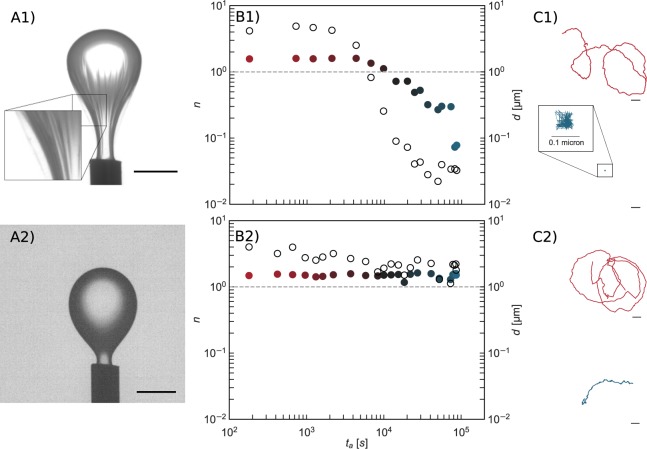Figure 2.
Characterization Of The Mechanics Of Bacteria Laden Interfaces. Panel (A): Pendant drop elastometry: a hexadecane droplet is held at the tip of an inverted needle in a bacteria suspension for 24 h and the drop surface is subsequently compressed by withdrawal of hexadecane. Scale bars: 1 mm. (A1) PAO1 laden interfaces are covered with a solid elastic film after 24 h. (A2) PA14 laden interfaces show no evidence of an elastic film formation over the same period. Panel (B): Exponent n (solid symbols) for lag times from 1.67 × 10−2–1.67 s and corresponding root mean square displacements d at lag time of 1.67 s (open circles) versus surface age. Color of the solid symbols, red to blue, indicates increased age. The dashed line, for reference, indicates the values of n and d of colloids subject to thermal Brownian motion in a bacteria-free hexadecane-water interface. (B1) PAO1 laden interfaces. (B2) PA14 laden interfaces. The PAO1 laden interface transitions to a nearly immobile film within 104 s. Probes at PA14 laden interface remain highly mobile for >104 s. Thereafter, d decays slightly as the interface becomes densely populated with bacteria, but the motion remains diffusive or super-diffusive. Panel (C): Typical trajectories traced by a colloidal probe for a 6 s time span at early (surface age of 60 seconds) and late (8.0 × 104 seconds) interface ages. Scale bars: 1 µm. (C1) PAO1 laden interfaces. (C2) PA14 laden interfaces. The colloid in the PAO1 laden interface is embedded in an elastic matrix.

